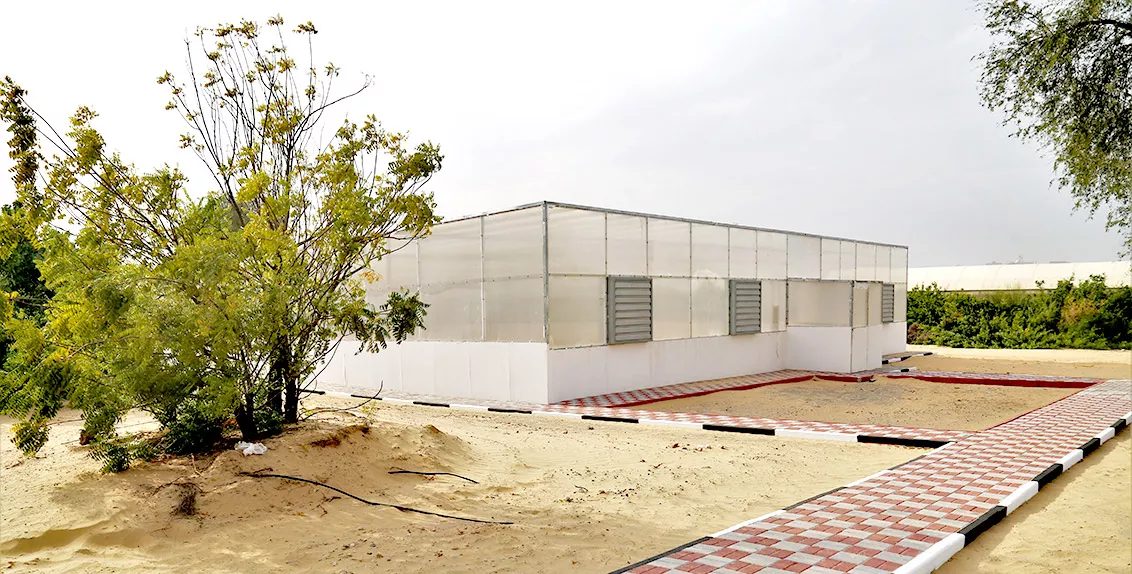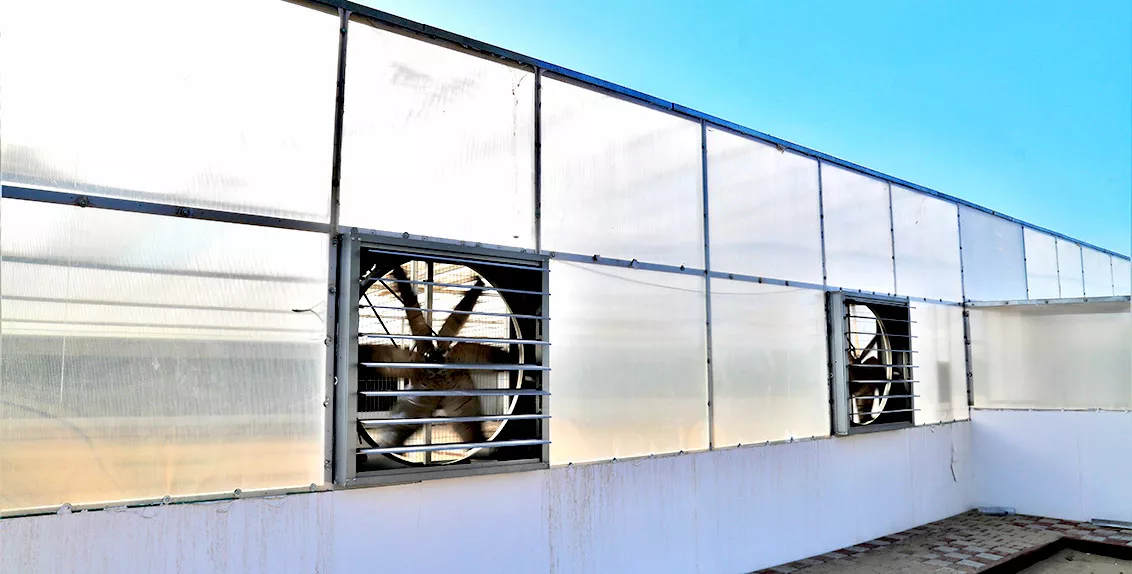ICBA starts testing saltwater-based greenhouse prototype
The International Center for Biosaline Agriculture (ICBA) has started testing a unique greenhouse prototype which uses saline groundwater and seawater to grow food.
According to the research team, unlike conventional greenhouses that require freshwater to grow vegetables, the saltwater-based greenhouse prototype uses 100 percent saline water and seawater for vegetable production. The scientists also plan to carry out a thorough analysis of return on investment to demonstrate the system’s economic feasibility.
The system features an environmentally-friendly technology in which, at one end, saline water passes through a porous wall made of pozzolan bricks, and, at the other end, fans suck in air from outside through a cold wall, thus creating a cooling effect inside the greenhouse.
Moreover, the system uses a natural method known as a psychrometric process to convert warm saline water, which moves through pipes exposed to the sun, into humid air; the moist air is then tapped to create root zone moisture in the soil for vegetable production.
The system is currently being tested, and if successful, it will prove a great way to reduce pressure on scarce freshwater resources in marginal environments and boost food production, especially in the Middle East and North Africa (MENA) region.
According to the Food and Agriculture Organization of the United Nations (FAO), on average, agriculture accounts for about 70 percent of global freshwater withdrawals. This is a major problem in water-scarce areas where many farmers rely on desalination units for their freshwater needs. However, desalination has high economic and environmental costs as most of the reject brine from desalination is disposed of into the soil and the sea, causing negative effects on the ecosystems.
It is, therefore, important to find ways to tap into alternative water resources such as saline groundwater and seawater for agriculture. And innovations like ICBA’s saltwater-based greenhouse prototype show a lot of promise.
The project is supported by the Islamic Development Bank (IsDB) through the Science, Technology and Innovation (STI) Transform Fund and is implemented in collaboration with Mr. Nassar Al-Madhoun, the inventor of the pozzolan cooling wall. It is expected to be completed by the end of 2021.


